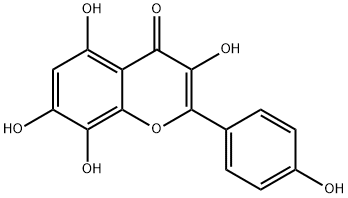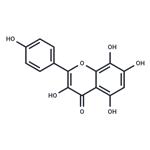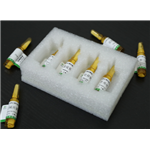Chemical Properties
Soluble in methanol, ethanol, DMSO and other organic solvents, derived from the aerial part of Equisetum, Rhodiola rosea.
Uses
Herbacetin is a flavonol compound, and a natural inhibitor of E.coli β-glucuronidase. Herbacetin inhibits inducible nitric oxide synthase via JNK and nuclear factor-κB in LPS-stimulated RAW264.7 cells. Molecular docking study of flavonoid compounds as an inhibitor of β-ketoacyl acyl carrier proteinsynthase II of Pseudomonas aeruginosa.
Definition
ChEBI: Herbacetin is a pentahydroxyflavone that is kaempferol substituted by a hydroxy group at position 8. It is a natural flavonoid from flaxseed which exerts antioxidant, anti-inflammatory and anticancer activities. It has a role as an EC 4.1.1.17 (ornithine decarboxylase) inhibitor, an antineoplastic agent, an apoptosis inducer, an angiogenesis inhibitor, a plant metabolite, an antilipemic drug, an anti-inflammatory agent and an EC 3.4.22.69 (SARS coronavirus main proteinase) inhibitor. It is a pentahydroxyflavone and a 7-hydroxyflavonol. It is functionally related to a kaempferol.
Biological Activity
Herbacetin is a natural flavonoid in flaxseed with a variety of pharmacological activities, including antioxidant, anti-inflammatory and anticancer effects. Gluprotamine is an allosteric inhibitor of Ornithine decarboxylase (ODC), which directly binds to Asp44, Asp243 and Glu384 on ODC.
in vivo
Herbacetin (orally administration; 20mg/kg) significantly reduces the body weight, plasma glucose, plasma insulin, and HOMA-IR activity in obesity associated insulin resistant mice (OIR). (Herbacetin dissolves in 0.5% DMSO) .Herbacetin (intraperitoneal injection; 0.4, 2, 10 or 20 mg/kg; BW) decreases the number and size of polyps in APCM in+ mice with no overt toxicity.
< b>




